
UPDATE January 26, 2013: I have altered the poster (removed the fish reference) after a message from New Life Parrot Rescue: Hemp seed is also another great essential fatty acids. We wouldn’t advocate feeding parrots fish due to pollutants in our waters and the fact that most parrots are essentially vegan and get their EFAs through a plant-based diet, including nuts and important seeds and grains.
Today, our guest blogger from FeedingFeathers, Shauna Roberts, writes about nuts and the reasons to add them to a parrot’s diet — in moderation:
Nuts are a food that energize.They are oily kernels within a hard-shelled fruit. Technically nuts are a few different things. Almonds and pistachios are fruits, peanuts are a legume and pine nuts and Brazil nuts are seeds. In general, nuts and seeds can be a source of vitamin E, essential fatty acids, protein and some are sources of calcium, phosphorus, magnesium and potassium as well as other nutrients.
Due to high fat content, they are an excellent energy source but should be fed in moderation as not to pack on extra grams. If eaten in excess, fats challenge the liver.
Although nuts are high in fat, they contain some beneficial fats. How much and what type of fats varies per nut type. Walnuts have recently been touted as a source of essential fatty acid omega-3 and although this is true, it’s mostly a source of omega-6. Best sources of omega-3 are flax and chia seed. Hemp seeds provide both omega 6 and omega 3.
For captive parrots that are not nearly as active compared to their wild cousins, nuts should be used sparingly. Take into consideration your parrot’s species and also how active each individual parrot is. A large Macaw that is moderately active could probably have up to 6 nuts a day, where as an inactive Amazon that sits on the perch most all day may only get 1/2-1 almond or cashew.
Some highlights:
- Pistachios contain carotenoids, hazelnuts provide a little.
- Walnuts are a source of omega 3 and all nuts are a source of essential fatty acids.
- Brazil nuts provide selenium.
- Hazel nuts and pine nuts for manganese.
- Pecans for flavanoids.
- Almonds, hazelnuts, pecans, pistachios and walnuts are sources of proanthocyanidins. Flavanoids and proanthyocyanidins are phytochemicals that may decrease risk of some diseases.
Nuts in their shell can be stored in a cool dry area and should last up to a year. Shelled nuts should be refrigerated or frozen in airtight containers and used up as soon as possible.
A special note about peanuts
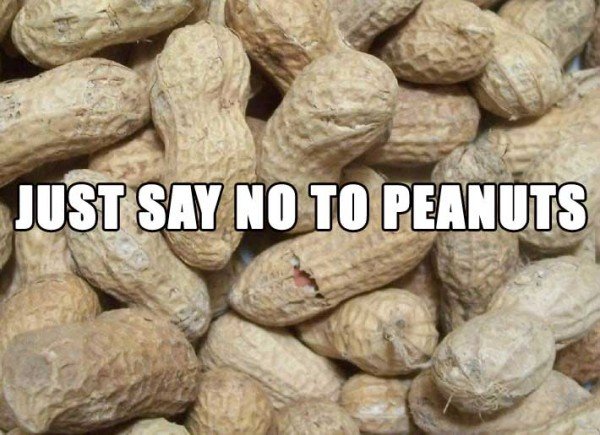
I’ve sat through 11 years of veterinary conferences and all vets are anti-peanut (with hard corn being an even bigger threat, along with some grains).
Peanuts can contain mycotoxins (mold/fungi) and are not suggested for parrots.
Peanuts are graded for aflatoxins by the FDA. Human grade peanuts cannot contain more than 20 ppb, but pet grade (depending on the source) may possibly be as high as 200-300 ppb.
If a person decides to feed the occasional peanut to a parrot, human grade roasted peanuts are suggested, but still discouraged. Parrots are said to be up to 200 times more sensitive to aflatoxins than humans.
More from The Gabriel Foundation:
For those of you who feed peanuts to your parrots, please be aware:
- Peanuts are often contaminated with aflatoxin, a fungal toxin. Aflatoxin is carcinogenic and causes liver damage in birds and other animals. It is often in the shell as well as in the peanut itself. Roasting peanuts reduces aflatoxin but does not eliminate it entirely.
- Peanuts with dark spots on them should be considered suspect; but even those that look clean and perfect could possibly be contaminated.
- Peanuts in nearly every commercial parrot/seed diet are not human-grade. Even feeding human grade/organic peanuts can be a health hazard to your bird. With better nutrition available to our birds in almonds, walnuts, pine nuts, pistachios, TGF recommends that you leave peanuts out of your bird’s diet.
- If you cannot resist giving your parrot a peanut, then feed only out of shell, dry roasted and unsalted peanuts. TGF suggests feeding them in tiny pieces for positive reinforcement when training your bird or when you want to reward your bird’s desired behavior.
Nutty ideas from around the web
Some great foraging toys from Creative Bird Toys (thank you, Dena for your email telling me about your wonderful toys!)
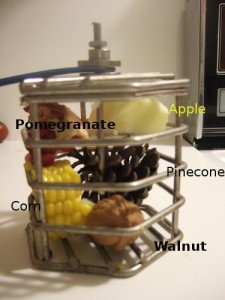
Nut Cage idea from Foraging for Parrots
Nut-treat Cage idea, found on Foraging For Parrots
- Pleeeeease share your Palm Nut with me!
A cute photo story about one Palm Nut and two parrots, found on Fluffies.org
A Cape Parrot shows off his Foraging Tower prowess. More photos here.
About Shauna Roberts:
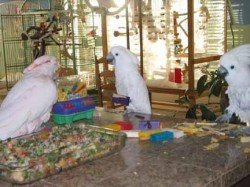 Shauna has had an interest in nutrition since the mid late 1960s. She renewed that interest in 1997 when a cockatoo wasn’t doing well on pellets, and she realized a fresh diet was needed. The bird is now over 17 and doing well, as is the rest of her flock – now 16 – some of which arrived with dietary health issues. She is also a diet consultant for the parrot welfare organization, The Gabriel Foundation. Her research has taken her to various conferences to listen to nutrition experts as far as Japan and EU, as well as attending AAV (Association of Avian Veterinarians) conferences since 2003 in her mission to learn.
Shauna has had an interest in nutrition since the mid late 1960s. She renewed that interest in 1997 when a cockatoo wasn’t doing well on pellets, and she realized a fresh diet was needed. The bird is now over 17 and doing well, as is the rest of her flock – now 16 – some of which arrived with dietary health issues. She is also a diet consultant for the parrot welfare organization, The Gabriel Foundation. Her research has taken her to various conferences to listen to nutrition experts as far as Japan and EU, as well as attending AAV (Association of Avian Veterinarians) conferences since 2003 in her mission to learn.
After retiring as a veterinary assistant, she discovered the internet and has been learning from and helping bird owners since 1995. In 2003, a parrot food list was founded named FeedingFeathers and now has over 3,700 members.
Further information:
- FeedingFeathers food list (a Yahoo group)
- FeedingFeathers on facebook
- Parrot Care (including nutrition information) on Phoenix Landing’s site
- Order nuts online from Nuts.com. I know people who have ordered from them, and are very happy with their products.
- New Life Parrot Rescue

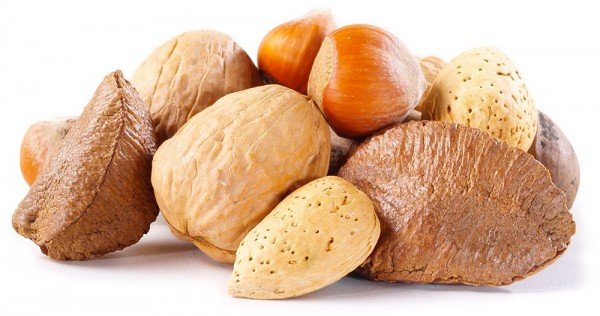
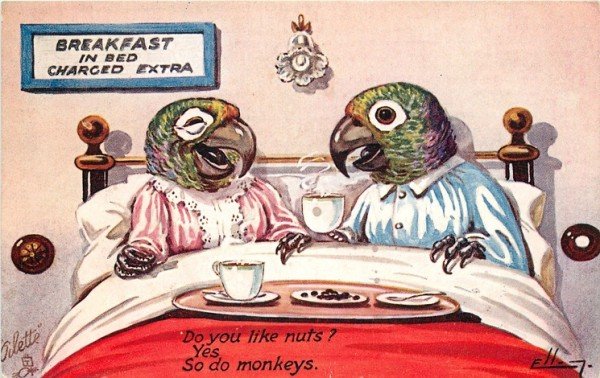

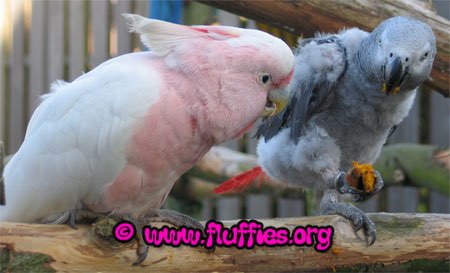


9 Responses to Nuts!